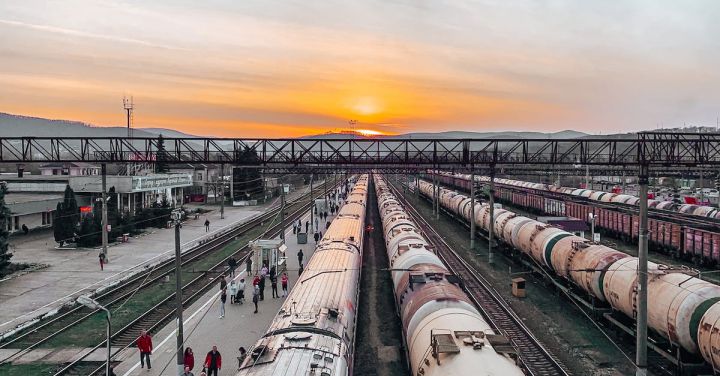The Transcontinental Railroad: Building a Nation Coast to Coast
The Transcontinental Railroad stands as an enduring symbol of American ingenuity and ambition. It is a testament to the determination of a young nation to connect its two coasts, bridging the vast expanse of land that lay in between. This monumental feat of engineering transformed America, revolutionizing travel, trade, and communication. Let us delve into the history of this remarkable endeavor and explore the impact it had on the growth and development of the United States.
The idea of a transcontinental railroad was first proposed in the mid-19th century, but it was not until the signing of the Pacific Railroad Act in 1862 that the project gained traction. The act provided federal support and land grants to two railroad companies, the Union Pacific and the Central Pacific, tasked with constructing the railroad from Omaha, Nebraska to Sacramento, California, respectively.
The construction of the railroad was a herculean undertaking, with thousands of miles of rugged terrain to traverse, including mountains, deserts, and vast plains. The Union Pacific, composed primarily of Irish and Civil War veterans, pushed westward from Omaha, while the Central Pacific, primarily composed of Chinese immigrant laborers, pushed eastward from Sacramento.
The work was grueling and dangerous, with workers facing extreme weather conditions, Indian attacks, and treacherous landscapes. Progress was slow, but eventually, the two rail lines converged at Promontory Summit, Utah, on May 10, 1869. The Golden Spike was driven into the ground, marking the completion of the Transcontinental Railroad and forever changing the face of America.
The impact of the Transcontinental Railroad cannot be overstated. It facilitated the rapid settlement of the West, opening up vast stretches of land to farmers, miners, and entrepreneurs. It provided a vital link between the East and the West, greatly reducing travel time and costs. What was once a treacherous and time-consuming journey by wagon or ship could now be completed in a matter of days. This newfound accessibility brought people closer together, fostering cultural exchange and economic growth.
The railroad also revolutionized trade and commerce. It allowed for the efficient transportation of goods across the country, connecting farmers and manufacturers to markets thousands of miles away. Raw materials from the West could now reach factories in the East, while finished goods from the East could reach consumers in the West. The railroad became the lifeblood of the American economy, fueling industrialization and spurring economic development.
Furthermore, the Transcontinental Railroad played a significant role in the expansion and consolidation of the United States. It facilitated the establishment of new towns and cities along its route, serving as a catalyst for urbanization. The railroad also spurred immigration, as people from all over the world flocked to America in search of new opportunities. It strengthened the federal government’s control over the vast territories of the West, as the presence of the railroad made it easier to govern and enforce laws.
In conclusion, the Transcontinental Railroad stands as a monumental achievement in American history. It united a nation divided by geography, transforming America into a truly connected and cohesive nation. The railroad not only brought economic prosperity but also fostered a sense of national identity and pride. It is a testament to the pioneering spirit and resilience of the American people, forever etched in the annals of our nation’s history.
